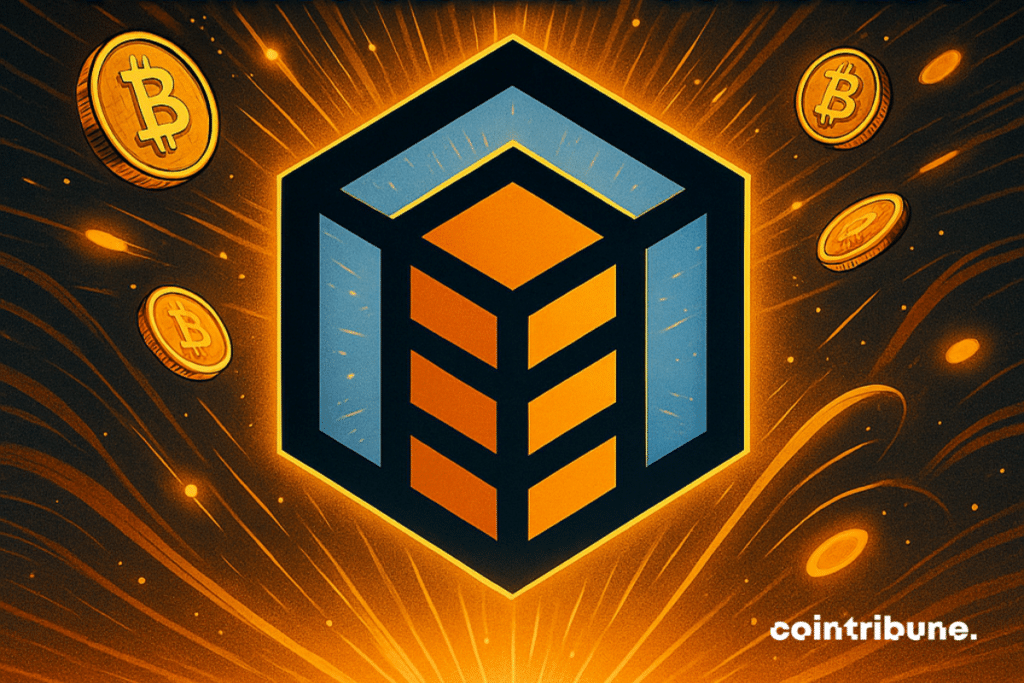RealT And DeFi: The Future Of Tokenized Real Estate
Real estate remains an essential investment sector, but it presents high entry barriers. Purchasing properties requires significant capital and complex procedures. Today, decentralized finance (DeFi) and blockchain are disrupting this model by offering more accessible solutions. RealT applies these innovations to real estate investment by allowing the purchase of property shares in the form of tokens. This model facilitates access to ownership and improves the liquidity of real estate assets. Thanks to DeFi, investors can use their tokens to generate additional returns. RealT thus positions itself as a gateway between traditional real estate and decentralized finance, creating new opportunities for investors.

The Functioning of Decentralized Finance Applied to Real Estate
Traditional real estate relies on lengthy and costly processes, limiting accessibility for investors. Decentralized finance (DeFi) offers an alternative by integrating blockchain to streamline and secure real estate transactions.
DeFi and Its Fundamental Principles
Decentralized finance (DeFi) transforms traditional financial services by relying on blockchain. It is based on autonomous protocols operating without banking intermediaries. Transactions are executed through smart contracts to guarantee full transparency. These smart contracts automatically enforce the defined rules without human intervention.
DeFi platforms offer multiple financial services accessible to everyone. Users can lend or borrow assets without going through a centralized institution. They can also trade tokens on open and decentralized markets. Unlike banks, DeFi does not require strict identity verification nor validation by a third party.
Eliminating intermediaries reduces costs and improves transaction efficiency. Interest rates and loan terms depend on algorithms rather than decisions from a central entity. This approach guarantees a fairer finance that is more accessible, especially for investors distant from traditional financial circuits.
DeFi operates continuously, without interruption. Users can access services anytime, without geographic constraints. This flexibility promotes the adoption of decentralized financial services across many sectors, including real estate.
Application of DeFi to Real Estate
Traditional real estate presents major constraints. Purchasing a property requires significant capital, and transactions take time. Asset management also remains costly and complex. Decentralized finance brings innovative solutions to these problems.
Tokenization allows representing a property as digital tokens on a blockchain. Each token corresponds to a fraction of the property and grants its holder rights over rental income and asset appreciation. This model removes financial barriers and facilitates real estate investment.
Thanks to DeFi, investors can buy, sell, and trade these tokens with just a few clicks. They no longer depend on a notary or bank to complete a transaction. Transfers are executed instantly and transparently. This fluidity improves the liquidity of real estate assets and allows investors to withdraw their capital more easily than with a physical property.
DeFi protocols also allow using real estate tokens as collateral to obtain loans. An investor can deposit tokens on a decentralized platform and receive a loan in stablecoins. This mechanism frees capital without requiring asset sale, thus providing better financial flexibility.
The combination of DeFi and real estate also automates rental income distribution. Smart contracts execute payments directly to investors’ wallets. This model reduces management costs and guarantees regular payments without human intervention.
By applying DeFi principles to real estate, platforms like RealT facilitate access to ownership and simplify asset management. They enable investors to diversify their portfolio while benefiting from blockchain advantages.
Integration of RealT into DeFi
Real estate investment has long been reserved for investors with significant capital. Blockchain and decentralized finance (DeFi) now offer a new approach, making real estate accessible to the broader public. RealT integrates into this ecosystem by combining real estate tokenization and DeFi mechanisms.
What is RealT?
RealT is a blockchain-based real estate investment platform. Founded in 2019 by Jean-Marc and Rémy Jacobson, it allows investors to acquire fractions of properties as tokens. Each token represents a real share of a physical property and guarantees holders a right to generated rental income.
Thanks to this model, RealT democratizes real estate investment by lowering the entry ticket. Unlike traditional investments requiring large sums, it is possible to purchase RealT tokens with a reduced capital, sometimes starting at 50 dollars. This approach facilitates ownership access while ensuring simplified management for investors.
RealT relies on the Ethereum blockchain and uses the Gnosis Chain network to reduce transaction costs. This technology guarantees operational transparency and immutability of property records. Each property is owned by an LLC (Limited Liability Company), whose shares are converted into tokens distributed to investors.
RealT’s RMM Platform
RealT is not limited to real estate tokenization. It integrates DeFi services through its platform RealT Money Market (RMM), which operates on the Aave V2 protocol. This platform allows users to lend and borrow assets using their real estate tokens as collateral.
With RMM, an investor can deposit their RealTokens as collateral and receive a loan in stablecoins such as USDC or DAI. This feature provides immediate liquidity without selling tokens, allowing reinvestment or covering other financial needs.
Loans on RMM are secured by an over-collateralization mechanism. This means the value of deposited RealTokens must exceed the loan amount. In case of collateral value drop, an automatic liquidation is triggered to protect the protocol and lenders.
Integrating RealT into DeFi via RMM transforms real estate tokens into financial assets usable within a decentralized ecosystem. Investors no longer just receive rent; they can optimize their returns by accessing advanced financial services without traditional banks.
Using RealT Tokens as Collateral
Tokenized real estate is not limited to passive ownership. Thanks to DeFi, investors can use their RealT tokens as collateral to obtain liquidity. This mechanism offers new financial possibilities without selling assets.
The Collateralization Process
Investors can deposit their RealT tokens on the RealT Money Market (RMM) platform to obtain a loan in stablecoins, such as USDC or xDai. This process functions similarly to traditional loans secured by physical assets, but with automated execution by smart contracts.
Once RealT tokens are deposited on RMM, the platform evaluates their market value. The loan amount depends on the collateralization ratio defined by the protocol. Generally, an investor can only borrow a fraction of the total value of their tokens, ensuring a safety margin for the lender.
Obtaining liquidity via RMM allows investors to take advantage of new opportunities without selling their real estate assets. They can reinvest these funds in other tokenized properties, finance projects, or even cover personal expenses, while continuing to collect rents from their RealT tokens.
Risk Management and Liquidations
The RMM platform uses a health factor to assess each borrower’s solvency. This factor represents the ratio between the value of tokens deposited as collateral and the outstanding loan amount. The higher this ratio, the greater the borrower’s safety margin.
If the value of RealT tokens declines or the borrower takes on too large a loan, the health factor decreases. When it reaches a critical threshold, an automatic liquidation is triggered. In this case, some of the tokens pledged as collateral are sold to repay the loan and avoid default.
This system protects lenders while ensuring platform stability. Investors must monitor their health factor and, if necessary, add tokens as collateral or repay part of the loan to avoid liquidation.
Thanks to this mechanism, RealT tokens become true financial assets usable within DeFi. They offer unprecedented flexibility to investors, combining rental income and access to immediate liquidity.
Some Concrete Examples of Passive Yields via DeFi
The integration of RealT tokens into DeFi is not limited to simply holding real estate assets. Investors can generate passive yields by leveraging different strategies on the RMM platform.
Liquidity Provision
Users can lend stablecoins on RealT Money Market (RMM) and receive interest in return. When an investor deposits USDC or xDai on the platform, these funds are made available to borrowers. In exchange, the lender earns annual interest, with rates varying based on supply and demand.
This mechanism works similarly to traditional savings accounts but often with a higher yield. Additionally, lenders retain the flexibility to withdraw their funds at any time, depending on market conditions.
Leverage on Real Estate Investments
Leverage allows increasing the profitability of a real estate portfolio. An investor holding RealT tokens can use them as collateral to borrow stablecoins on RMM. With these funds, they can purchase new real estate tokens and increase their rental income.
This process optimizes the available capital without requiring additional cash. The investor continues to receive the rents from the tokens used as collateral while benefiting from the yields of the new acquisitions. However, this strategy carries risks, especially in case of a decrease in the value of tokenized assets.
Thanks to these options, RealT offers unique opportunities to generate passive income. DeFi transforms real estate investment into a dynamic financial asset, combining profitability and flexibility.
The integration of RealT into decentralized finance (DeFi) is transforming real estate investment. This model removes traditional barriers and makes access to real estate simpler and more flexible. Through tokenization, investors hold actual shares of assets while benefiting from the opportunities offered by DeFi. The ability to use RealT tokens as collateral and to generate passive income strengthens the attractiveness of this approach.
This convergence between real estate and decentralized finance opens new horizons for investors. RealT thus positions itself as a key player in the evolution of digitized real estate investment.

Maximize your Cointribune experience with our "Read to Earn" program! For every article you read, earn points and access exclusive rewards. Sign up now and start earning benefits.
The Cointribune editorial team unites its voices to address topics related to cryptocurrencies, investment, the metaverse, and NFTs, while striving to answer your questions as best as possible.
The contents and products mentioned on this page are in no way approved by Cointribune and should not be interpreted as falling under its responsibility.
Cointribune strives to communicate all useful information to readers, but cannot guarantee its accuracy and completeness. We invite readers to do their research before taking any action related to the company and to take full responsibility for their decisions. This article should not be considered as investment advice, an offer, or an invitation to purchase any products or services.
Investment in digital financial assets carries risks.
Read more